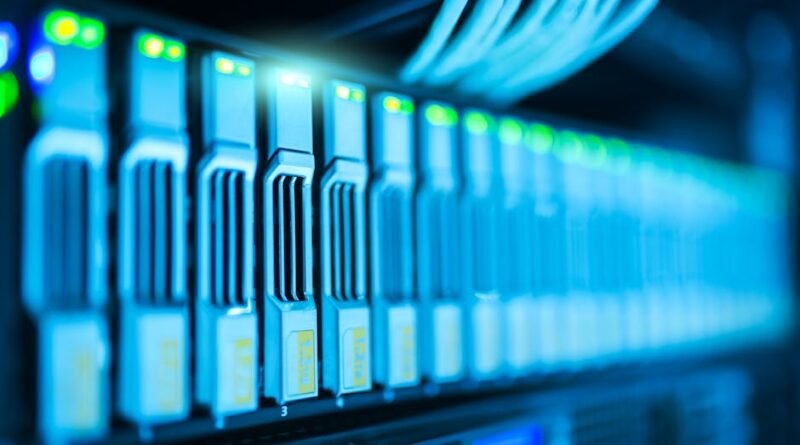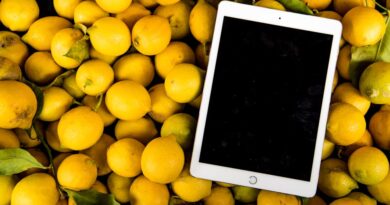The Internet of Things: Revolutionizing the Way We Live and Work
Imagine a world where your refrigerator can automatically order groceries when you’re running low, your thermostat adjusts to your preferences without you having to touch it, and your car can drive itself to your destination. This isn’t just a scene from a sci-fi movie; it’s the reality of the Internet of Things (IoT). In simple terms, IoT refers to the interconnected network of devices, vehicles, appliances, and other physical objects that are embedded with sensors, software, and connectivity to exchange data and communicate with each other. In this article, we will delve into the world of IoT, exploring its impact on our daily lives, businesses, and society as a whole.
The History and Evolution of IoT
The concept of IoT has been around for decades, with the first internet-connected device, a Coke machine at Carnegie Mellon University, being connected to the internet in the early 1980s. However, it wasn’t until the early 2000s that IoT started gaining traction, thanks to advancements in technology and the proliferation of smart devices. The term “Internet of Things” was coined by Kevin Ashton, a British entrepreneur, in 1999, to describe the interconnectedness of devices using RFID technology.
Since then, IoT has evolved rapidly, with billions of devices now connected to the internet, collecting and sharing data in real-time. From smart home devices like thermostats, security cameras, and voice assistants to industrial applications in agriculture, healthcare, and manufacturing, IoT has permeated every aspect of our lives.
The Impact of IoT on Industries
IoT has transformed various industries, revolutionizing the way businesses operate and deliver services. In the healthcare sector, IoT devices like wearable fitness trackers and remote monitoring systems have enabled healthcare providers to deliver personalized care to patients, monitor their health in real-time, and improve treatment outcomes. In agriculture, IoT sensors and drones are used to monitor crop health, optimize water usage, and increase crop yields.
Similarly, in manufacturing, IoT devices are used to track inventory, monitor equipment performance, and automate production processes, leading to increased efficiency and reduced downtime. The retail sector has also embraced IoT technology, with retailers using beacons and sensors to track customer behavior, personalize shopping experiences, and streamline inventory management.
Challenges and Concerns Surrounding IoT
While the benefits of IoT are undeniable, there are several challenges and concerns that need to be addressed to ensure the widespread adoption and success of IoT technology. One of the primary concerns is data security and privacy, as the interconnected nature of IoT devices makes them vulnerable to cyber attacks and data breaches.
Another challenge is the interoperability of IoT devices, as different devices may use different communication protocols and standards, making it difficult for them to communicate with each other effectively. Additionally, the sheer volume of data generated by IoT devices poses challenges in terms of data management, storage, and analysis.
Future Trends and Innovations in IoT
Looking ahead, the future of IoT looks promising, with several trends and innovations shaping the landscape of connected devices. One of the key trends is the integration of artificial intelligence (AI) and machine learning algorithms into IoT devices, enabling them to analyze data in real-time, make intelligent decisions, and learn from user behavior.
Another emerging trend is the rise of edge computing, where data processing is done closer to the source of the data, reducing latency and bandwidth usage. This is especially beneficial for applications that require real-time processing, such as autonomous vehicles and industrial automation.
Expert Opinions on IoT
According to Gartner, a leading research and advisory company, the number of connected devices is expected to reach 25 billion by 2021, with IoT spending projected to exceed $1 trillion. In a report by McKinsey, it is estimated that IoT could have a potential economic impact of $3.9 trillion to $11.1 trillion per year by 2025 in industries such as manufacturing, healthcare, and transportation.
Industry experts believe that IoT will continue to disrupt traditional business models, drive innovation, and create new opportunities for growth and development. As more devices become connected and data becomes increasingly valuable, businesses will need to adapt to this new reality to stay competitive in the digital age.
Conclusion
In conclusion, the Internet of Things has already begun to transform our world, connecting devices, collecting data, and enabling new possibilities across industries. From smart homes and wearable devices to smart cities and autonomous vehicles, IoT is reshaping the way we live, work, and interact with our environment.
As we look to the future, it is clear that IoT will continue to evolve, bringing new challenges and opportunities for businesses, governments, and society as a whole. By understanding the impact of IoT, addressing concerns around security and privacy, and embracing new trends and innovations, we can harness the full potential of this transformative technology and create a more connected and intelligent world.
To wrap things up, the Internet of Things is not just a technological buzzword; it is a reality that is redefining the way we think about the internet, data, and connectivity. Whether it’s improving efficiency in manufacturing, enhancing healthcare outcomes, or creating smarter cities, IoT has the power to reshape our world and unlock a future of endless possibilities.




